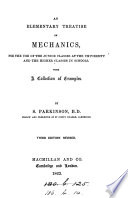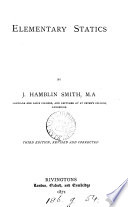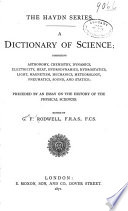 | Stephen Parkinson - Mechanics - 1863 - 408 pages
...Bruges, without any strict proof of it. 22. The Triangle of Forces. If three forces acting at a point be represented in magnitude and direction by the sides of a triangle taken in order, they will be in equilibrium. Let ABC be the triangle whose sides taken in order represent... | |
 | James Hamblin Smith - Statics - 1868 - 102 pages
...MOD :: sin a : sin yS : sin 7. 23. THE POLYGON OF FORCES. If any number of forces acting at a point can be represented in magnitude and direction by the sides of a polygon taken in order, they will be in equilibrium. Let the forces acting at A be represented in magnitude... | |
 | Richard Wormell - Mechanics - 1869 - 270 pages
...construction we may at once deduce the following proposition. When a number of forces acting on a particle can be represented in magnitude and direction by the sides of a polygon taken in order the forces are in equilibrium. Parallelepiped of Forces. 34. If three forces,... | |
 | James Hamblin Smith - Statics - 1871 - 148 pages
...101), sin a : sin /3 : sin y. 40. THE POLYGON OF FORCES. If any number of forces, acting at a point, can be represented in magnitude and direction by the sides of a polygon taken in order, they will be in equilibrium. Let any number of forces P, Q, R, S, T, acting... | |
 | George Farrer Rodwell - Physical sciences - 1871 - 620 pages
...side completing the polygon. From this it follows that when a number of forces acting upon a particle can be represented in magnitude and direction by the sides of a closed polygon taken in order, the forces are in equilibrium. (See ParaUeloyram of forces, Trianyle... | |
 | J W. Mulcaster - 1871 - 242 pages
...be deduced several important theorems. 37. Triangle of Forces.—If three forces acting at a point be represented in magnitude and direction by the sides of a triangle taken in order, they will be in equilibrium. Let AD, DC, CA represent three forces acting on a point... | |
 | William James Browne - 1872 - 146 pages
...the triangle BDF, viz., BD, DF, F B. 47. The converse of this — If three forces, acting at a point, be represented in magnitude and direction by the sides of a triangle, taken in order, they are in equilibrium, — is also true, and may be easily proved from the same figure.... | |
 | J Alfred Skertchly - 1873 - 184 pages
...other forces. Also : — Whenever any number of forces, acting on a point, are so disposed that they can be represented in. magnitude and direction by the sides of a polygon, or other geometrical figure, taken in order, the forces are in equilibrium. Hence it follows... | |
 | Charles Robert Cross - Mechanics - 1873 - 182 pages
...opposite to the remaining force. 89. Conversely, if the forces acting at a point are in equilibrium, they can be represented in magnitude and direction by the sides of a polygon drawn parallel to their lines of action. The proof of this proposition is evidently precisely... | |
 | De Volson Wood - Bridges - 1873 - 276 pages
...several forces which are applied at the several angles as shown. These forces being in equilibrium may be represented in magnitude and direction by the sides of a triangle, as a, b, c, Fig. 123. Since the forces at C, Fig. 122, including the strains in the bars, are in equilibrium,... | |
| |